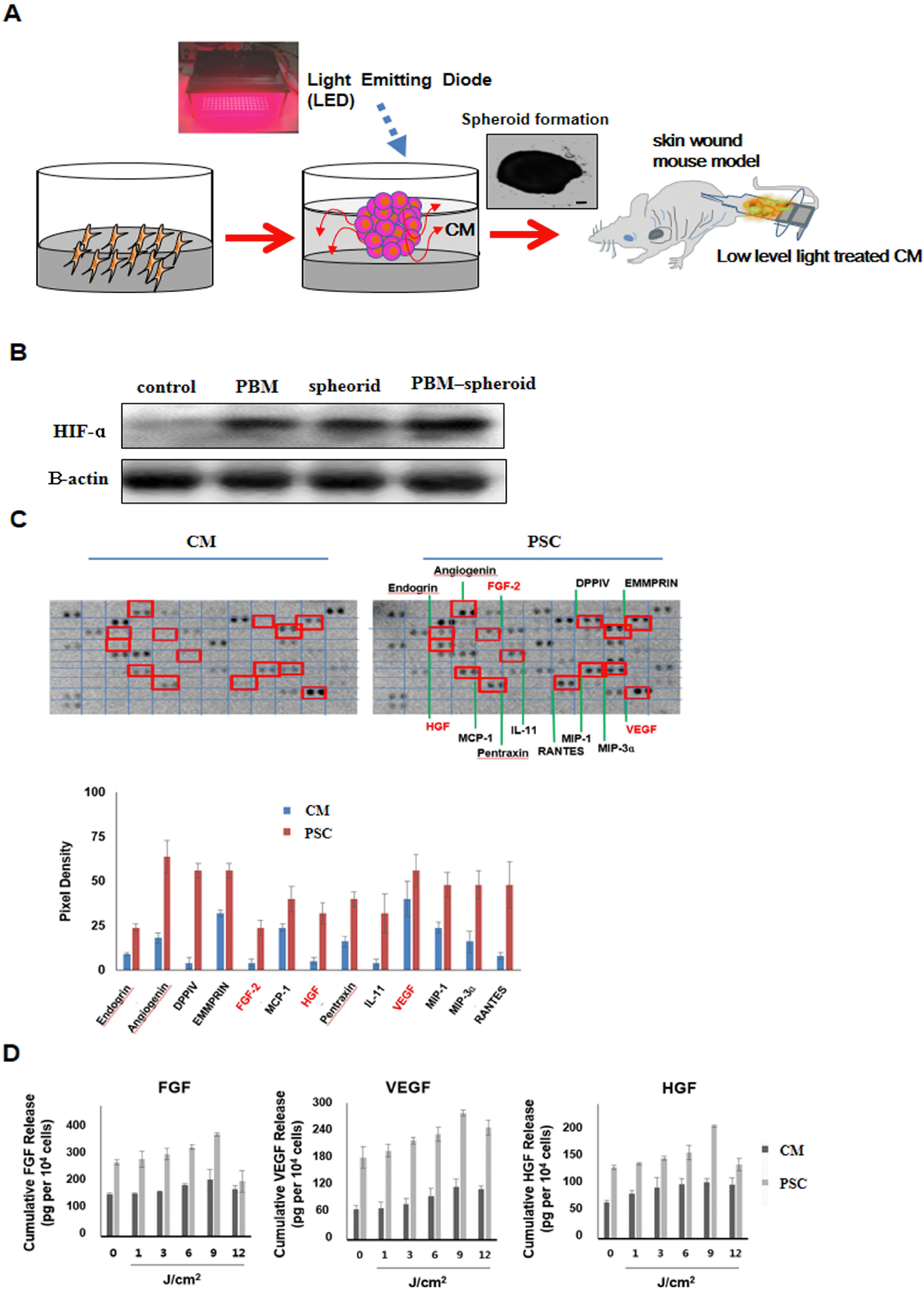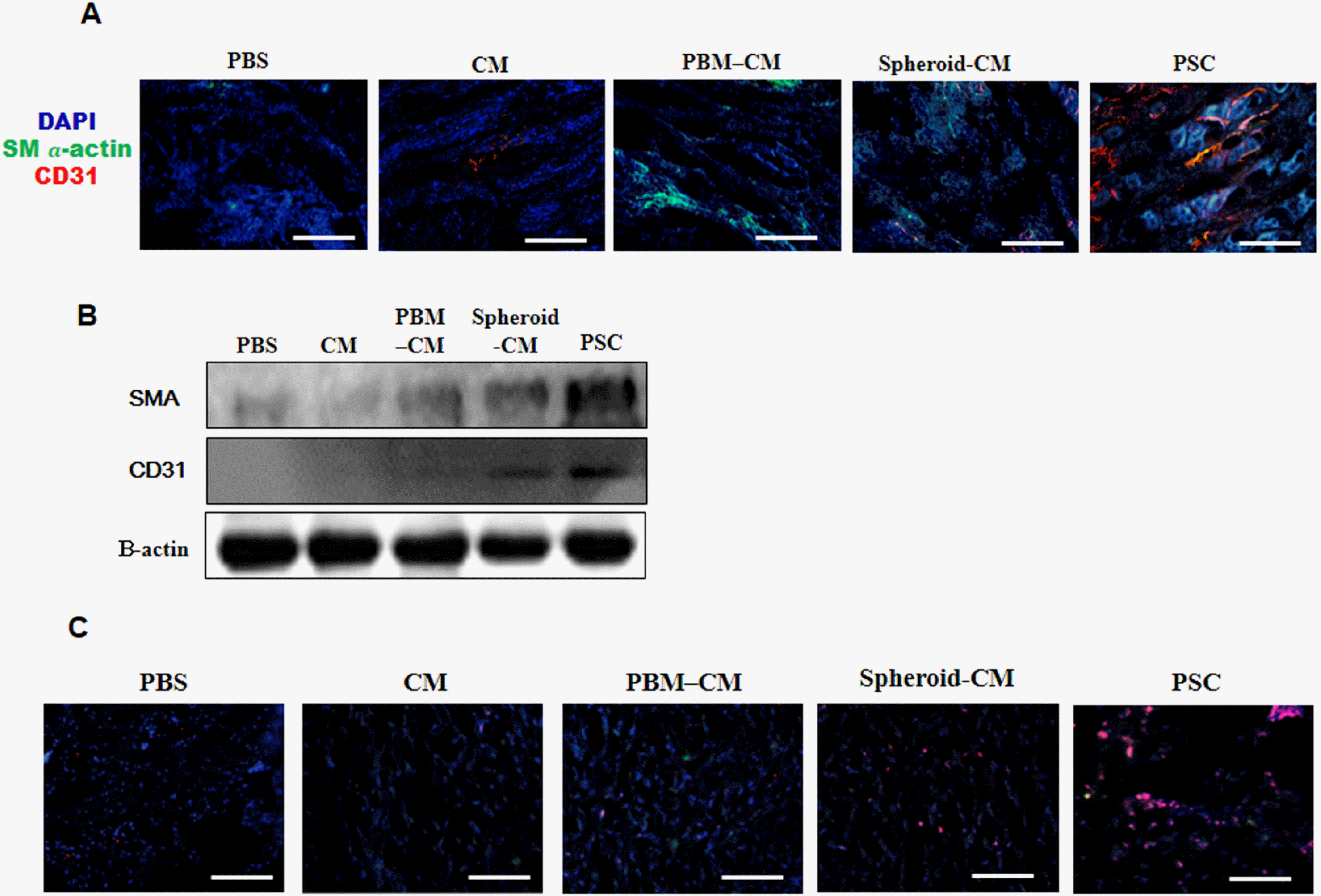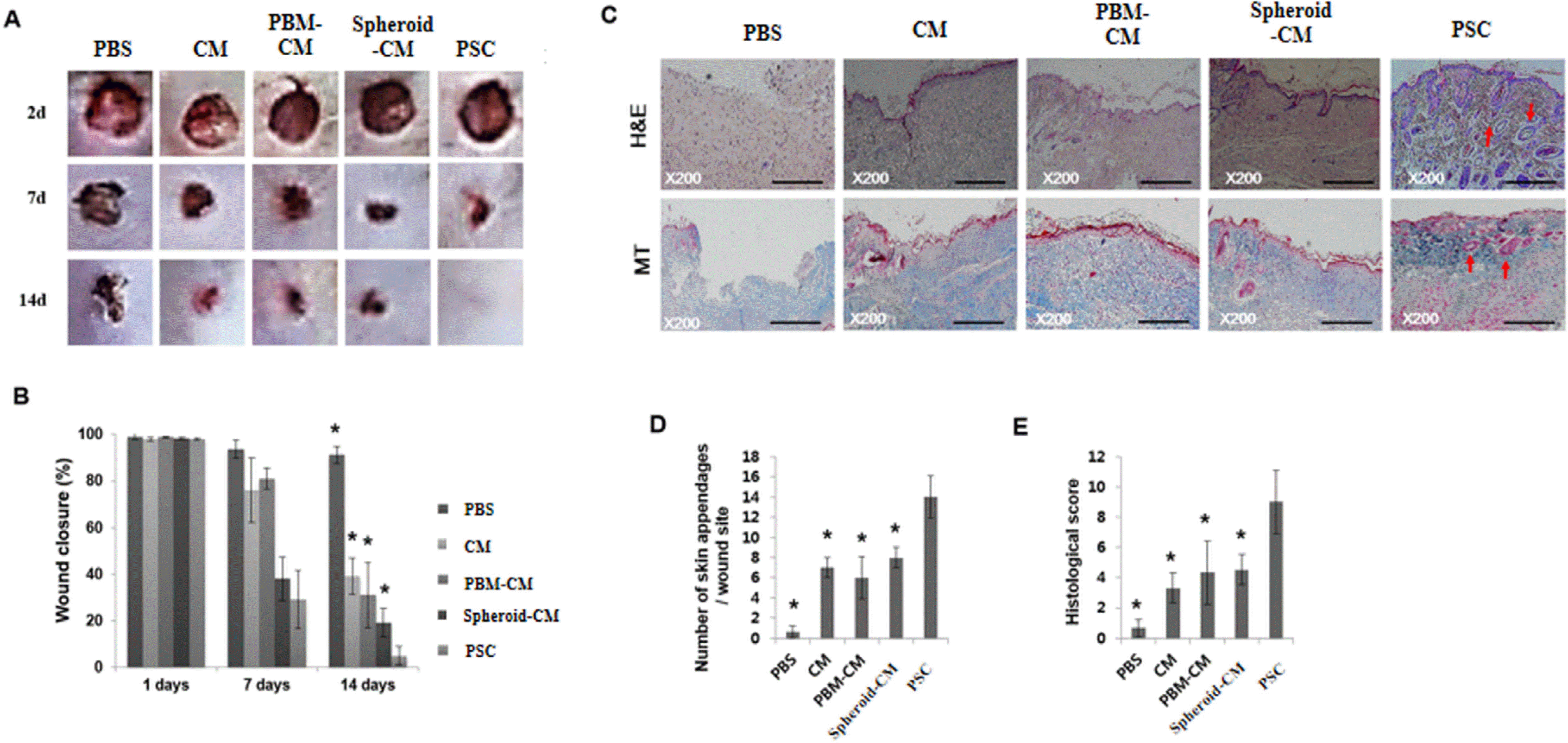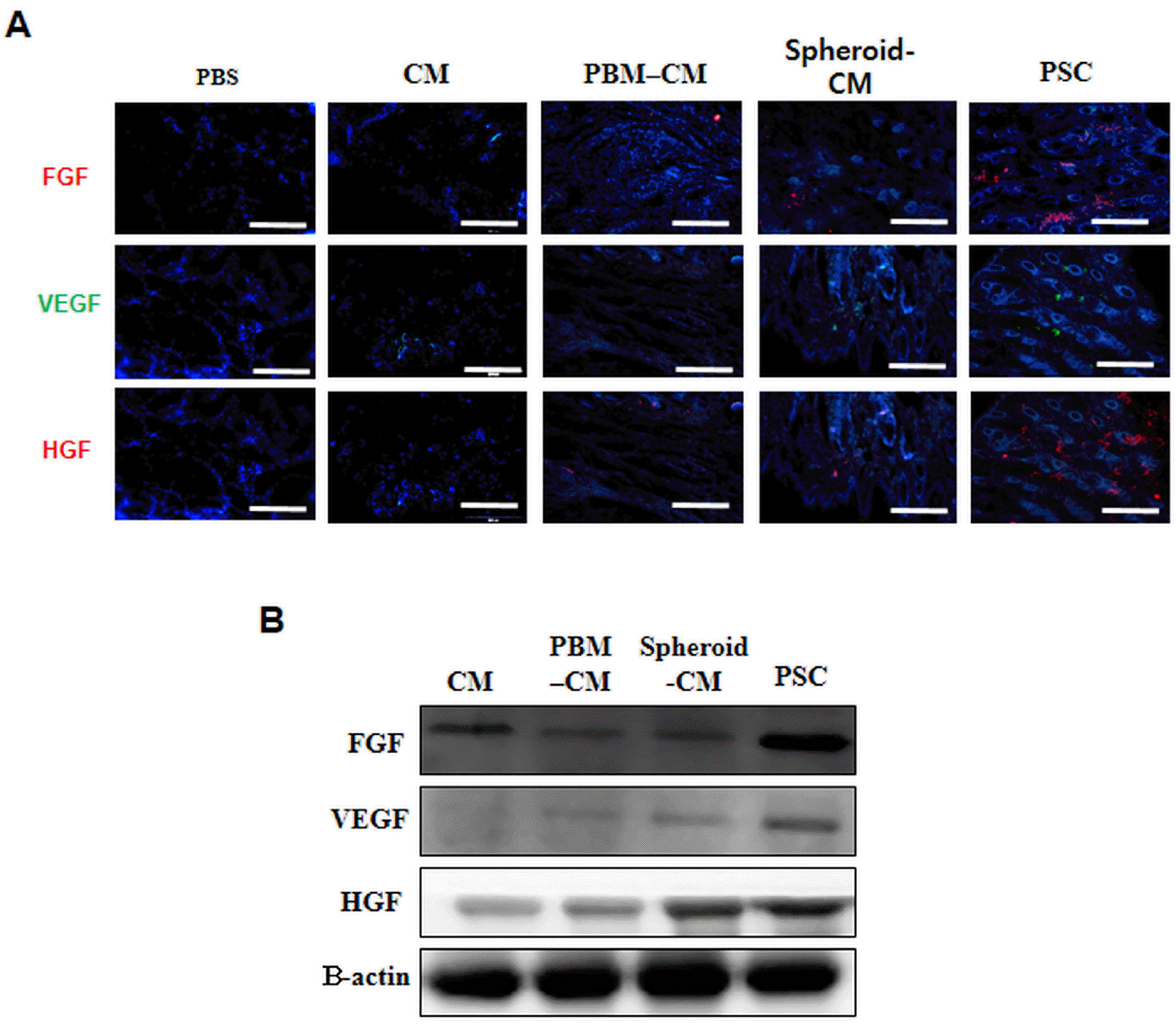1. Kyriakides TR, Maclauchlan S. 2009; The role of thrombospondins in wound healing, ischemia, and the foreign body reaction. J Cell Commun Signal. 3:215–225. DOI:
10.1007/s12079-009-0077-z. PMID:
19844806. PMCID:
PMC2778594.

3. Nie C, Yang D, Morris SF. 2009; Local delivery of adipose-derived stem cells via acellular dermal matrix as a scaffold: a new promising strategy to accelerate wound healing. Med Hypotheses. 72:679–682. DOI:
10.1016/j.mehy.2008.10.033. PMID:
19243892.

4. Heydarkhan-Hagvall S, Schenke-Layland K, Yang JQ, Heydarkhan S, Xu Y, Zuk PA, MacLellan WR, Beygui RE. 2008; Human adipose stem cells: a potential cell source for cardiovascular tissue engineering. Cells Tissues Organs. 187:263–274. DOI:
10.1159/000113407. PMID:
18196894.

5. Gimble J, Guilak F. 2003; Adipose-derived adult stem cells: isolation, characterization, and differentiation potential. Cyto-therapy. 5:362–369. DOI:
10.1080/14653240310003026. PMID:
14578098.

6. Joggerst SJ, Hatzopoulos AK. 2009; Stem cell therapy for cardiac repair: benefits and barriers. Expert Rev Mol Med. 11:e20. DOI:
10.1017/S1462399409001124. PMID:
19586557.

7. Don CW, Murry CE. 2013; Improving survival and efficacy of pluripotent stem cell-derived cardiac grafts. J Cell Mol Med. 17:1355–1362. DOI:
10.1111/jcmm.12147. PMID:
24118766. PMCID:
PMC4049630.

8. Park IS, Chung PS, Ahn JC. 2017; Adipose-derived stem cell spheroid treated with low-level light irradiation accelerates spontaneous angiogenesis in mouse model of hindlimb ischemia. Cytotherapy. 19:1070–1078. DOI:
10.1016/j.jcyt.2017.06.005. PMID:
28739168.

9. Li P, Guo X. 2018; A review: therapeutic potential of adipose-derived stem cells in cutaneous wound healing and regeneration. Stem Cell Res Ther. 9:302. DOI:
10.1186/s13287-018-1044-5. PMID:
30409218. PMCID:
PMC6225584.

10. Valcárcel M, Arteta B, Jaureguibeitia A, Lopategi A, Martínez I, Mendoza L, Muruzabal FJ, Salado C, Vidal-Va-naclocha F. 2008; Three-dimensional growth as multicellular spheroid activates the proangiogenic phenotype of colorectal carcinoma cells via LFA-1-dependent VEGF: implications on hepatic micrometastasis. J Transl Med. 6:57. DOI:
10.1186/1479-5876-6-57. PMID:
18844982. PMCID:
PMC2579286.

11. Pastar I, Stojadinovic O, Yin NC, Ramirez H, Nusbaum AG, Sawaya A, Patel SB, Khalid L, Isseroff RR, Tomic-Canic M. 2014; Epithelialization in wound healing: a comprehensive review. Adv Wound Care (New Rochelle). 3:445–464. DOI:
10.1089/wound.2013.0473. PMID:
25032064. PMCID:
PMC4086220.

12. Wu Y, Chen L, Scott PG, Tredget EE. 2007; Mesenchymal stem cells enhance wound healing through differentiation and angiogenesis. Stem Cells. 25:2648–2659. DOI:
10.1634/stemcells.2007-0226. PMID:
17615264.

13. Nie C, Yang D, Xu J, Si Z, Jin X, Zhang J. 2011; Locally administered adipose-derived stem cells accelerate wound healing through differentiation and vasculogenesis. Cell Transplant. 20:205–216. DOI:
10.3727/096368910X520065. PMID:
20719083.

14. Park IS, Rhie JW, Kim SH. 2014; A novel three-dimensional adipose-derived stem cell cluster for vascular regeneration in ischemic tissue. Cytotherapy. 16:508–522. DOI:
10.1016/j.jcyt.2013.08.011. PMID:
24210783.

15. Park IS, Kim SH, Jung Y, Rhie JW, Kim SH. 2013; Endothelial differentiation and vasculogenesis induced by three-dimensional adipose-derived stem cells. Anat Rec (Hoboken). 296:168–177. DOI:
10.1002/ar.22606. PMID:
23109231.

17. Kanji S, Das H. 2017; Advances of stem cell therapeutics in cutaneous wound healing and regeneration. Mediators Inflamm. 2017:5217967. DOI:
10.1155/2017/5217967. PMID:
29213192. PMCID:
PMC5682068.

18. Chen P, Chen JZ, Shao CY, Li CY, Zhang YD, Lu WJ, Fu Y, Gu P, Fan X. 2015; Treatment with retinoic acid and lens epithelial cell-conditioned medium in vitro directed the differentiation of pluripotent stem cells towards corneal endothelial cell-like cells. Exp Ther Med. 9:351–360. DOI:
10.3892/etm.2014.2103. PMID:
25574197. PMCID:
PMC4280952.

19. Choi K, Kang BJ, Kim H, Lee S, Bae S, Kweon OK, Kim WH. 2013; Low-level laser therapy promotes the osteogenic potential of adipose-derived mesenchymal stem cells seeded on an acellular dermal matrix. J Biomed Mater Res B Appl Biomater. 101:919–928. DOI:
10.1002/jbm.b.32897. PMID:
23529895.

20. Mvula B, Mathope T, Moore T, Abrahamse H. 2008; The effect of low level laser irradiation on adult human adipose derived stem cells. Lasers Med Sci. 23:277–282. DOI:
10.1007/s10103-007-0479-1. PMID:
17713825.

21. Mvula B, Moore TJ, Abrahamse H. 2010; Effect of low-level laser irradiation and epidermal growth factor on adult human adipose-derived stem cells. Lasers Med Sci. 25:33–39. DOI:
10.1007/s10103-008-0636-1. PMID:
19172344.

22. Wang X, Ge J, Tredget EE, Wu Y. 2013; The mouse excisional wound splinting model, including applications for stem cell transplantation. Nat Protoc. 8:302–309. DOI:
10.1038/nprot.2013.002. PMID:
23329003.

23. Kapur SK, Wang X, Shang H, Yun S, Li X, Feng G, Khurgel M, Katz AJ. 2012; Human adipose stem cells maintain proliferative, synthetic and multipotential properties when suspension cultured as self-assembling spheroids. Biofabri-cation. 4:025004. DOI:
10.1088/1758-5082/4/2/025004. PMID:
22522924. PMCID:
PMC3401583.

24. Glicklis R, Merchuk JC, Cohen S. 2004; Modeling mass transfer in hepatocyte spheroids via cell viability, spheroid size, and hepatocellular functions. Biotechnol Bioeng. 86:672–680. DOI:
10.1002/bit.20086. PMID:
15137079.

26. Santini MT, Rainaldi G, Indovina PL. 2000; Apoptosis, cell adhesion and the extracellular matrix in the three-dimensional growth of multicellular tumor spheroids. Crit Rev Oncol Hematol. 36:75–87. DOI:
10.1016/S1040-8428(00)00078-0. PMID:
11033298.

27. Ginani F, Soares DM, Barreto MP, Barboza CA. 2015; Effect of low-level laser therapy on mesenchymal stem cell proliferation: a systematic review. Lasers Med Sci. 30:2189–2194. DOI:
10.1007/s10103-015-1730-9. PMID:
25764448.

28. Hu WP, Wang JJ, Yu CL, Lan CC, Chen GS, Yu HS. 2007; Helium-neon laser irradiation stimulates cell proliferation through photostimulatory effects in mitochondria. J Invest Dermatol. 127:2048–2057. DOI:
10.1038/sj.jid.5700826. PMID:
17446900.

29. Bhang SH, Cho SW, La WG, Lee TJ, Yang HS, Sun AY, Baek SH, Rhie JW, Kim BS. 2011; Angiogenesis in ischemic tissue produced by spheroid grafting of human adipose-de-rived stromal cells. Biomaterials. 32:2734–2747. DOI:
10.1016/j.biomaterials.2010.12.035. PMID:
21262528.

30. Lee EJ, Park HW, Jeon HJ, Kim HS, Chang MS. 2013; Potentiated therapeutic angiogenesis by primed human mesenchymal stem cells in a mouse model of hindlimb ischemia. Regen Med. 8:283–293. DOI:
10.2217/rme.13.17. PMID:
23627823.

31. Alev C, Ii M, Asahara T. 2011; Endothelial progenitor cells: a novel tool for the therapy of ischemic diseases. Antioxid Redox Signal. 15:949–965. DOI:
10.1089/ars.2010.3872. PMID:
21254837.








 PDF
PDF Citation
Citation Print
Print



 XML Download
XML Download